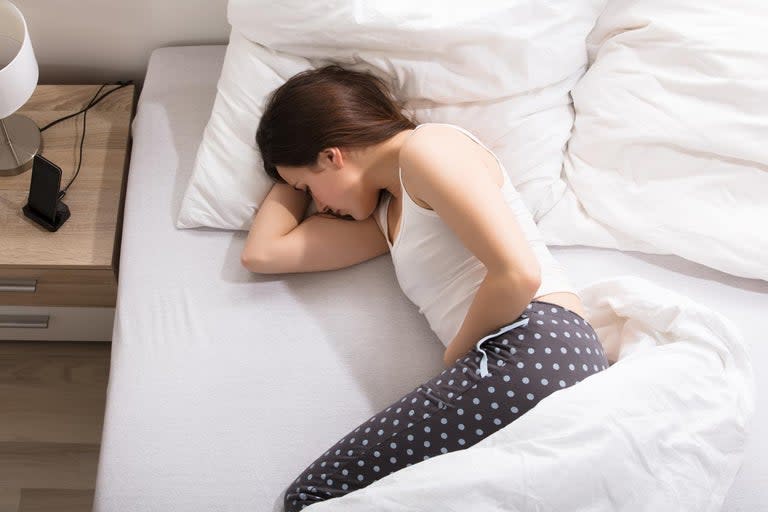How to tell the difference between period pain and endometriosis, according to a doctor
It’s the silent condition that 10 per cent of women in the UK are suffering from, but most of them don’t even realise they have it.
Endometriosis is a condition that’s had a spotlight shone on it in recent years thanks to Girl’s creator Lena Dunham’s very public battle with it, and Alexa Chung revealing she has the condition in a viral Instagram post.
It affects one in 10 women in the UK and can cause 30 to 50 per cent of sufferers to be infertile.
So what is endometriosis?
Dr Haider Jan, Consultant Gynaecologist and Obstetrician at The Lister Hospital, part of HCA Healthcare UK told the Standard: “Endometriosis is a condition where cells similar to those that line the womb - grow and embed outside of the womb causing pain, inflammation and also in some cases a difficulty in falling pregnant.
“It is estimated that up to 10 per cent of women in the UK suffer with endometriosis, many of which are undiagnosed. This approximates to almost 1.5 million women in the UK, almost as many as those who suffer with diabetes.”
What are the signs of endometriosis and how is it diagnosed?
Endometriosis is notoriously difficult to diagnose as the symptoms can feel like severe period pain.
Dr Jan said: “It is very difficult to diagnose endometriosis based on symptoms alone although there are many particular signs one should look out for. Painful periods, pain leading up to a period, pain during deep intercourse, pain after sex, mid menstrual cycle pain, and pain whilst opening the bowels are key symptoms which would concern me as a consultant.
“If a symptom arises around the menstrual cycle it is likely to be hormonally related and so points to endometriosis or Adenomyosis.”
If you think you have any of these symptoms, it’s best to see your GP who can point you in the right direction. According to Endometriosis UK, “the only definitive way to diagnose endometriosis is by a laparoscopy - an operation in which a camera (a laparoscope) is inserted into the pelvis via a small cut near the navel”.
How can you tell the difference between endometriosis and severe period pain?
Period pain is a symptom of endometriosis so it can be easy to dismiss endometriosis as bad cramps.
Dr Jan explained: “Period pain can have many causes - only one of which being endometriosis. We do know however, that severe period pain in adolescence may be a significant pointer towards endometriosis, and so should be investigated further.”
If you experienced severe period pain through adolescence, coupled with the symptoms listed above, make an appointment with your GP.
How is endometriosis treated?
Unfortunately, if you are diagnosed with endometriosis there is no cure, but there are a number of treatments available to help relieve the pain – this should be decided between you and your healthcare professional.





